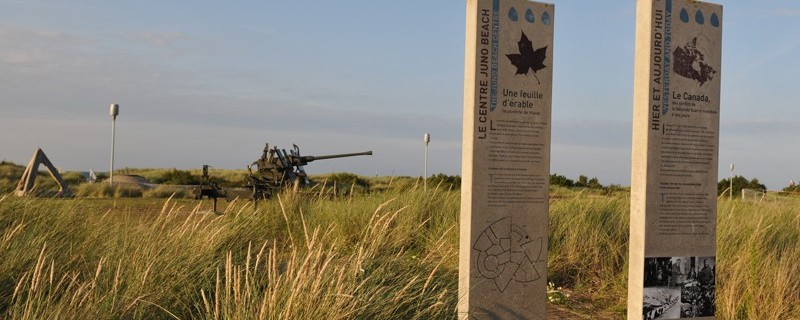Juno Beach was the second most heavily defended sector of the D-Day Landing Beaches after Omaha Beach.
It was designated to be the landing area for the 3rd Canadian infantry division and the British 48th Royal Marine Commando. Their objectives included the linkup with both of the neighboring British beaches, Sword and Gold, on their left and right and the seizure of Carpiquet Airfield ten miles (16km) inland west of the city of Caen.
The Canadian objectives were to secure the landing beach areas.
The 7th Canadian Infantry Brigade was to capture the seaside towns of Courseulles and Graye sur Mer.
The 8th Canadian Infantry Brigade was to capture the seaside town of Bernieres and open the road to St Aubin sur Mer.
No 48 Commando was to assault the strongpoint in the town of St Aubin sur Mer and to push east to link up with No 41 Commando coming west from Sword Beach.
The 9th Canadian Infantry Brigade was to follow up and push on to Carpiquet and Caen.
The landing was planned for 7.35am but was delayed by ten minutes to allow the tide to cover the reefs offshore.
The German defenses were heavy in this part of the landing area but the quality of the troops was low. The Canadian 3rd Division took heavy casualties initially but managed the furthest advance inland by nightfall of June 6th.



